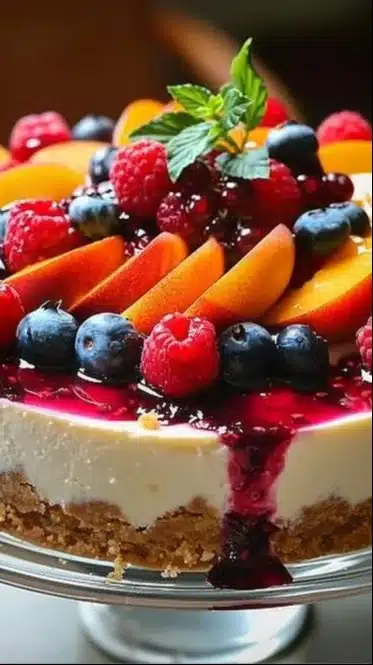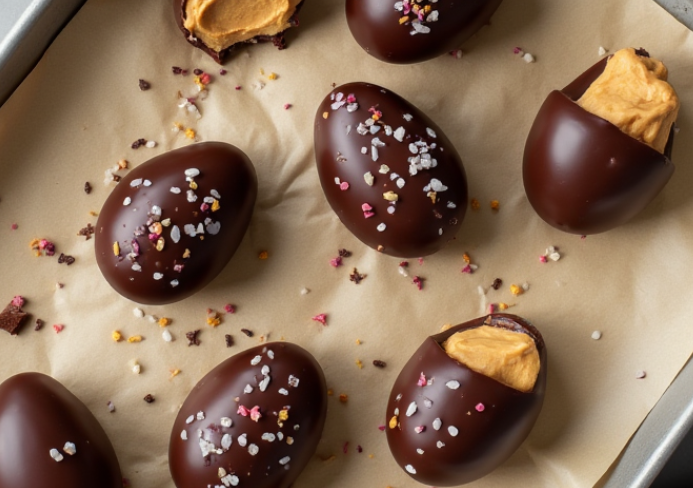Tarte aux Myrtilles Façon Grand-Mère – A Taste of French Nostalgia
Few desserts capture the heart quite like the tarte aux myrtilles façon grand-mère. This rustic French treat, often passed down through generations, is simple in appearance but rich in flavor, memory, and tradition. Whether served at a family lunch, a countryside wedding, or as an afternoon goûter, this blueberry tart offers a delicious trip back in time.
Table of Contents
At the heart of the grand-mère style lies a devotion to simplicity—honest ingredients, minimal fuss, and techniques that emphasize texture and balance. From the flaky crust to the juicy, slightly tangy filling of myrtilles (wild blueberries), everything about this tart speaks of heritage. If you want to master the art of this dish, understanding the ingredients and their roles is essential. Knowing, for example, how to craft a tender and buttery pâte brisée can make all the difference. For those who want to make it from scratch, this homemade pâte brisée recipe is an excellent guide.
The myrtilles, or wild blueberries, are the star. Their tartness balances the sugar, while their deep color and intense flavor are unmatched by common blueberries. If you’re curious about how these berries are grown and used in France, this article on wild blueberry cultivation in France offers a fascinating look.
What Makes It “Façon Grand-Mère”?
So what exactly defines the grandmother’s way? It’s not just about using older techniques—it’s about choosing natural, seasonal ingredients, embracing imperfections, and creating comfort on a plate. A tart made in this fashion won’t have perfect edges or glossy finishes, but it will carry the warmth and authenticity of a family recipe.
This approach values:
- Homegrown or locally sourced ingredients
- Uncomplicated steps that yield maximum flavor
- Handmade crusts and fillings without artificial enhancers
- Simplicity in presentation but richness in taste
Ingredient Deep Dive: The Essentials
To make a traditional tarte aux myrtilles façon grand-mère, here’s what you’ll need:
- 250g pâte brisée – either homemade or store-bought
- 500g fresh myrtilles – wild if possible
- 100g sugar – to sweeten the berries naturally
- 1 tbsp flour – helps thicken the filling
- 1 tsp lemon juice – for brightness
- 20g butter – adds richness and helps with browning
- Powdered sugar – for dusting before serving

Each ingredient plays a crucial role. The flour absorbs juice from the berries, preventing a soggy bottom. The lemon juice adds acidity to cut through the sweetness. Butter not only adds flavor but also ensures the filling bubbles beautifully without overflowing.
Step-by-Step Preparation
Here’s how to recreate this nostalgic dessert in your own kitchen:
- Preheat your oven to 180°C (356°F)
- Roll out the pâte brisée and press it gently into a tart pan
- Prick the bottom with a fork to prevent puffing
- In a bowl, mix the myrtilles, sugar, flour, and lemon juice
- Pour the mixture into the tart shell
- Dot the top with small pieces of butter
- Bake for about 40 minutes until the crust is golden and the filling bubbles
- Let it cool completely before dusting with powdered sugar
Baking Tips from French Grandmothers
Here are a few time-tested secrets passed down through generations:
- Pre-bake the crust slightly if your berries are extra juicy
- Let the tart cool fully to allow the filling to set before slicing
- Use ceramic or metal tart pans for even baking
- Choose wild myrtilles if you can—they’re smaller but more flavorful
Serving Suggestions and Pairings
This tart pairs beautifully with:
- Whipped cream (unsweetened or lightly sweetened)
- Vanilla ice cream or crème fraîche
- A glass of light dessert wine or even a strong espresso
It’s perfect as a stand-alone dessert or a centerpiece for a rustic summer lunch.
Nutritional Notes and Portions
- Each tart typically serves six people
- One slice contains around 250–300 calories, depending on the amount of sugar and butter
Variations to Try
Once you’ve mastered the original, feel free to explore:
- Tarte rustique – freeform version without a tart pan
- Blueberry-almond tart – add almond meal to the base for richness
- Vegan version – swap butter for plant-based fat, and use vegan pastry
- Gluten-free crusts – using rice flour or nut flours as a substitute
Regional Twists Across France
In France, regional variations abound. In the Vosges, the tart might include a splash of kirsch (cherry liqueur), while in Savoie, some versions are sweetened with local mountain honey. You’ll also find versions with thicker fillings or topped with a second crust like a pie.
Myrtilles: The Star Ingredient
Why are myrtilles so beloved in French cuisine?
- Packed with antioxidants and vitamin C
- Intense, floral taste that deepens when baked
- Found in mountainous regions, especially the Alps and Vosges
- Often handpicked and sold at local markets
Wild myrtilles are smaller and darker than cultivated blueberries, but they carry a superior flavor that shines in baked goods.
Common Mistakes to Avoid
Avoid these pitfalls for the perfect tart:
- Using too much sugar – it can overpower the natural fruit flavor
- Skipping the flour – leads to runny filling
- Not letting the tart cool – the filling won’t set properly
- Underbaking the crust – results in a soggy texture
FAQs: People Also Ask
Can I use frozen blueberries?
Yes, but thaw and drain them first to remove excess liquid.
What’s the difference between blueberries and myrtilles?
Myrtilles refer to wild European blueberries, which are smaller, darker, and more aromatic than the larger, cultivated blueberries.
How do I keep the tart from being runny?
Add flour or cornstarch to thicken the filling, and avoid overloading with fruit.
What is pâte brisée and can I substitute it?
Pâte brisée is a classic French shortcrust pastry—tender and buttery. You can use pie dough or puff pastry as an alternative, but results will vary.
How long does it keep?
Store in the fridge for up to 3 days. You can also freeze the tart before baking.
Storage & Reheating
- Refrigerate leftovers in an airtight container
- Best eaten at room temperature
- Reheat in an oven at 160°C (320°F) for 10 minutes to revive the crust
Conclusion
The tarte aux myrtilles façon grand-mère is more than a dessert—it’s a tradition. With just a few simple steps and humble ingredients, you can bring a piece of French culinary heritage into your kitchen. Let the flavors of wild blueberries, buttery crust, and loving preparation speak for themselves—and maybe, just maybe, start your own delicious tradition.
PrintTarte aux Myrtilles Façon Grand-Mère – A Taste of French Nostalgia
- Total Time: 50 minutes
- Yield: 6–8 servings 1x
- Diet: Vegetarian
Description
A rustic and traditional French blueberry tart made with pâte brisée and wild myrtilles. Lightly sweetened and thickened with flour, this classic dessert evokes the charm of homemade family baking.
Ingredients
- 250g pâte brisée (shortcrust pastry)
- 500g fresh myrtilles (wild blueberries)
- 100g sugar
- 1 tablespoon flour (for thickening)
- 1 teaspoon lemon juice
- 20g butter (cut into small pieces)
- Powdered sugar (for finishing)
Instructions
- Preheat oven to 180°C (356°F).
- Roll out the pâte brisée and press it into a tart pan.
- Prick the base with a fork to prevent puffing.
- In a bowl, gently toss the myrtilles with sugar, flour, and lemon juice.
- Pour the fruit mixture into the tart shell and spread evenly.
- Dot the surface with small pieces of butter.
- Bake for 40 minutes, or until the crust is golden and the filling is bubbling.
- Let the tart cool completely before serving.
- Dust with powdered sugar just before serving.
Notes
This tart is best served at room temperature or slightly chilled. You can substitute fresh myrtilles with frozen (do not thaw beforehand). Add a scoop of vanilla ice cream or crème fraîche for an extra treat.
- Prep Time: 10 minutes
- Cook Time: 40 minutes
- Category: Dessert
- Method: Baking
- Cuisine: French
Nutrition
- Serving Size: 1 slice
- Calories: 280
- Sugar: 18g
- Sodium: 45mg
- Fat: 13g
- Saturated Fat: 6g
- Unsaturated Fat: 6g
- Trans Fat: 0g
- Carbohydrates: 36g
- Fiber: 2g
- Protein: 3g
- Cholesterol: 20mg
Keywords: tarte aux myrtilles, blueberry tart, French tart, rustic dessert, grand-mère recipe, homemade tart






